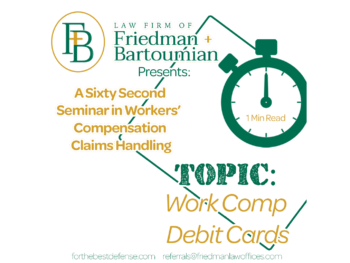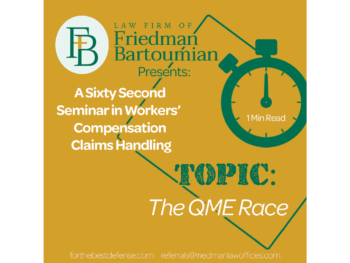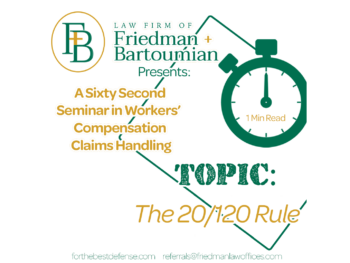
Without a doubt the best way for an employer to control its workers’ compensation costs is to prevent accidents from occurring in the first place. An effective safety program is a proven means of protecting employees from injury while saving the employer thousands of dollars in insurance premiums.
Various safety programs exist, mostly comprised of a contest with awarded prizes. Numerous safety games are available on-line. Many of these programs are well tested and have been successful for a long time. They all tend to reward employees for safe conduct on the job. The key to a successful program is to maintain employee interest by periodically offering new safety games and prizes. Also, if so desired, various third-party vendors are available for hire to administer the program on behalf of the employer.
Incredibly, on more than a few occasions an applicant’s attorney has filed a discrimination petition under Labor Code 132a against an employer because an injured worker was disqualified from winning a safety prize due to an industrial accident! Fortunately, sanity has prevailed, in that when addressing the issue, the Board has ruled that safety incentive programs fall outside the prohibitions of LC 132a and are thus, non-discriminatory as a matter of law (see: LC 6401, Stemler v. WCAB (1988) 53 CCC 390[; Butler v. WCAB (1998) 63 CCC 1407 (writ denied); and Kesecker v. Marin Community College District, 2011 Cal. Wrk. Comp. P.D. LEXIS 577).
Some employers have had a difficult time quantifying the success of a safety incentive program as it is impossible to precisely determine the number of injuries prevented. We can only compare the frequency and severity of injuries prior and post implementation, and then study the results. For example: a large company in Fremont, California consistently reported over 40 industrial claims per month to their administrator. Once an incentive program was implemented, where employees were rewarded for working safely, the number of injuries dramatically dropped to only two claims per month and stayed at that level for over a year. The safety program appeared to be an overwhelming success; however, management then did something which proved to be terribly shortsighted. They discontinued the safety incentive program because their claims frequency problem had been solved. Of course, upon discontinuation of incentive awards, the number of reported industrial claims quickly rose to over 40 per month. In just 30 days the cost of those new claims outweighed the cost of the discontinued safety program by whopping 4,500%.
The takeaway from the foregoing: if it ain’t broke, don’t fix it!









 VCB Liens: A Sixty-Second Seminar in Workers’ Compensation Claims Handling
VCB Liens: A Sixty-Second Seminar in Workers’ Compensation Claims Handling
Leave a Reply